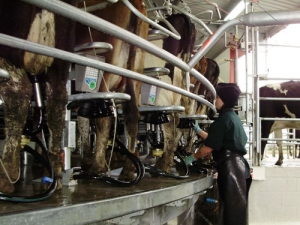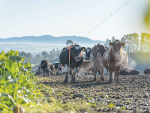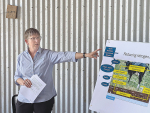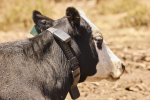Those questions were asked by Alltech chief innovation officer Aidan Connolly at the company’s REBELation Symposium in Kentucky.
Alltech is a biotechnology and leading animal nutrition company. Its core business is improving animal health and performance by adding nutritional value with innovative use of yeast fermentation, enzyme technology, algae and nutrigenomics which studies the impact of nutrition at genetic level.
Connolly told the symposium, attended by the Rural News, that clearly there is an efficiency issue with ruminant animals versus other animals. Ruminants appear to be not as efficient at converting food to production albeit different types of feedstuffs are being consumed.
The genetic variation of ruminant animals is much greater than with other species such as chickens, he says. “The digestibility factor of evaluating how ruminant forages are digested is very variable as well and we need to be introducing new technologies.”
He says ruminant producers should embrace new technologies and be faster and more adaptable in their businesses than anyone else.
Steps which can be taken include:
Feed efficiency: Alltech is involved in a system called vitro fermentation model (IFM). This allows real time analysis of what cows are consuming. It tracks digestion to show how those forages and feeds are digested in the rumen. Issues relating to rumen efficiency can be addressed immediately.
A sample showed a ‘before’ diet which was inefficiently digested. The diet was rebalanced by replacing blood meal with soya bean meal and Optigen (an Alltech product which is a non-protein nitrogen (NPN) source for ruminants) and using the IFM technique they increased milk production by 2.8kg/cow and intake by 0.45kg on a daily basis.
“This shows how we need to recreate what is happening in the rumen and predict and therefore change the diets to make it work,” says Connolly.
Carbon footprint: “Rather than looking at carbon footprint as being a problem for ruminant animals, we need to look at it as an opportunity,” he says. “If we can make that rumen work more efficiently, if we have less nutrient waste in the urine, we can make that ruminant animal more efficient and therefore make milk or meat more efficiently produced. So this leads to a carbon calculator. The most exciting thing from this is we can make more money by addressing this issue.”
Seed to beat: Covap is an ambitious and innovative (agricultural products) cooperative in Spain looking at feeding animals by controlling forages to guarantee the quality of the product. Alltech has developed a partnership with them and has seen improvements in the quality of food they are selling and also efficiency.
Technologies: “We see so many areas of the cow that should be monitored,” says Connolly. We should look at intake, body temperatures, fatness, locomotion, rumination and fertility. “Many technologies are coming out – ear ties that can measure body temperature, rumen probes that can detect what is going on directly in the rumen feeding real-time information; we’ve seen monitors like cow bells round the neck of the cow allowing you to detect changes in daily temperature and therefore predict when ovulation is occurring and be much more accurate in insemination.
“That can feed into applications on the smartphone, again making us smarter as farmers and that efficiency is extremely important because of the [feed efficiency] gap we have.”
Connolly says we should start to imagine a world where we connect all these things together – genetic selections, feed efficiency, productivity and sustainability.
But, he asks, will we drown in that data? Certainly the data will be too large to process by traditional means. But technologies are developing which can look at visually recognising the cow.
A smartphone can be held up inside a barn, survey 50 cows, identify the cows individually, and look for behaviour, locomotion and health issues. It will identify such things as lameness, acidosis or body temperature.
“Consumers consistently tell us beef is too variable,” says Connolly. “They want something that is juicy and tasty, they want it to be healthy, but most of all they want it to be consistent. They are starting to throw in other words as well – they want it antibiotic free, they want improved shelf life and they want all that without compromising the cost of production.
“Is that too much to ask? Perhaps. I know Alltech has plenty of ideas for enriching that with selenium, DHA (an Omega 3 fatty acid) and algae.”
And there are other issues, such as the McDonalds’ move to antibiotics free, says Connolly. The industry is trying to understand what antibiotics free means. It is increasingly affecting the industry and he named several American companies in a process of redefining what meat is and what they want to buy.
In conclusion, Connolly says perhaps ruminants are not the most efficient species. Perhaps we need to address more uniformity in terms of consistency of genetics and to understand better forages.
But by embracing new technologies, the producer can improve and differentiate themselves from competitors.
“By leading the production of forages and the understanding of data involved with forages you can make yourself more efficient – the most efficient producers in your industry, and gain greater confidence and loyalty from your customers.”



















